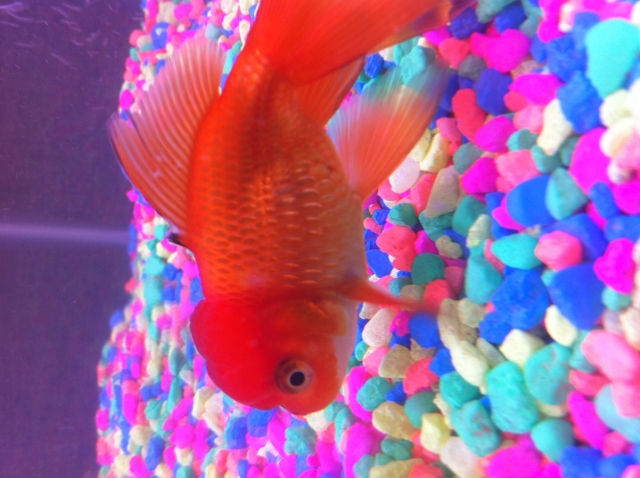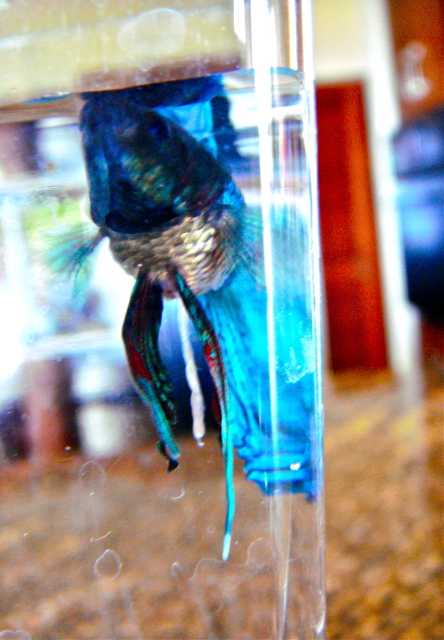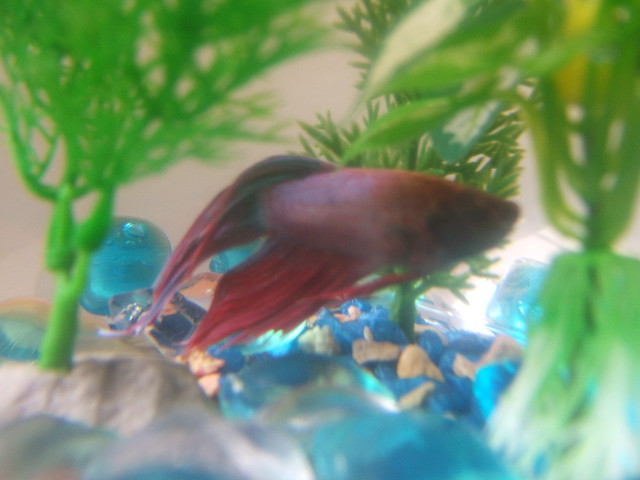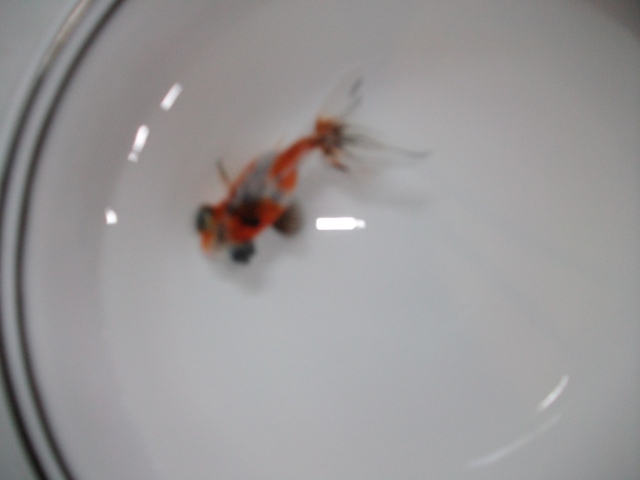QuestionWill - I have a fantail which is about 3 yr's old. It has a huge belly and cannot swim straight up, it is on its side all the time. What can I do to help it as it floats on it's side at the top of the pond. Cal
AnswerSWIM BLADDER DISEASE
Symptoms: Erratic Swimming Position
Loss of equilibrium
Fish will be unable to maintain buoyancy
Symptoms of Stress & Disease
Swim Bladder Disease General Description
Swim bladder disease is a multifactorial illness which primarily affects ornamental goldfish which have globoid body shapes, like orandas, ryukins, and fantails. It most often presents as a fish which floats at the surface, or a fish which stays on the bottom and doesn't seem to be able to easily rise. A fish which has normal buoyancy but is listing to one side or the other often does not have swim bladder disease, but may have other diseases.
Swim Bladder Disease Treatments
This is a problem more common in fancy goldfish, and there is no cure for it. Feeding medicated food (see bottom of page), adding salt to the tank, feeding peas, and raising the temperature to 76 degrees may help but only for a short time. Eventually the fish may be unable to eat and will have to be euthanized.
Feed your fish a couple of peas. That's right, peas. Just get some frozen peas, thaw them, and feed them to your fish. A professor of fish medicine at N.C. State College of Veterinary Medicine has done this in several cases with very good results. He thinks that the peas somehow encourage destruction of the impaction. No hard scientific data yet, but it's worth a try.
Fast your fish for a couple of days. Withhold all food for three or four days, and sometimes this alone will break up the impaction and return things to normal. Most fish can go a week to ten days without food and be just fine.
Periodic aspiration of the swim bladder works very well. Basically, you stick a needle in the swim bladder and suck out some of the air. Not something to be entered into lightly, but does work well. This is not a cure, but a successful treatment. The head veterinarian at the Baltimore Aquarium prefers this method.
Swim Bladder Disease Prevention
As always, the golden rule of fish disease is Water Quality. If swim bladder disease does have an infectious cause, your fish will be better able to resist this infection (and others) if your water quality is good. Regular water changes and water testing are a must.
Pre-soak your flake or pelleted food. This will allow expansion to occur prior to the fish eating it, and will lessen the chance of impaction.
Even better, switch to a gel-based food or other food source, i.e. frozen or live food.

 hand feeding fish
QuestionSpottie
QUESTION: Hi! Im really interest
hand feeding fish
QuestionSpottie
QUESTION: Hi! Im really interest
 Something wrong with my red cap oranda and dont know whats causing it
QuestionQUESTION: Hi,
I have a two inch or
Something wrong with my red cap oranda and dont know whats causing it
QuestionQUESTION: Hi,
I have a two inch or
 Sick Siamese Fighting Fish
Question
Hi. I have a male Siamese Fighting Fish
Sick Siamese Fighting Fish
Question
Hi. I have a male Siamese Fighting Fish
 Fish- Bettas Health
QuestionQUESTION: I brought my Betta a few months ago a
Fish- Bettas Health
QuestionQUESTION: I brought my Betta a few months ago a
 Missing Fin
Question
Herald
My Goldfish recently lost its right pec
Missing Fin
Question
Herald
My Goldfish recently lost its right pec